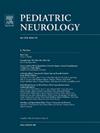Clinical Features and Prognostic Factors of Pediatric Guillain-Barré Syndrome With Anti-Sulfatide Antibody
IF 3.2
3区 医学
Q2 CLINICAL NEUROLOGY
引用次数: 0
Abstract
Background
The study analyzed the clinical features and risk factors for poor prognosis in children with Guillain-Barré syndrome (GBS) spectrum disorders positive for anti-sulfatide antibodies.
Methods
Clinical and follow-up data of 43 children diagnosed with GBS spectrum disorders positive for serum and/or cerebrospinal fluid anti-sulfatide antibodies and treated at the Children's Hospital of Chongqing Medical University between July 2018 and April 2023 were analyzed. A 1:1 matching was performed for a comparative analysis of clinical features.
Results
Respiratory tract prodromal infection was common in the positive anti-sulfatide antibody group (53.4%, 23 of 43). The main presenting symptoms were limb weakness (67.4%, 29 of 43), pain (67.4%, 29 of 43), ataxia (32.5%, 14 of 43), and cranial nerve involvement (62.8%, 27 of 43). The clinical classification was predominantly classical GBS (76.7%, 33 of 43), with a high prevalence of acute inflammatory demyelinating polyneuropathy (41.2%, 20 of 33). Brainstem and medulla lesions were the main cranial magnetic resonance imaging (MRI) findings (16.7%, six of 36), and spinal cord MRI (32.5%, 14 of 34) showed cauda equina or partial nerve root enhancement. The following features showed a significant difference in prevalence between the anti-sulfatide-antibody-positive and -negative groups: gender, cranial nerve involvement, nerve root tension sign, abnormal brain MRI, GBS disability score (GBS-DS) at discharge, difference in GBS-DS between admission and discharge, and GBS-DS at one-month follow-up. Shorter time to peak was identified as an independent risk factor for poor short-term prognosis in GBS spectrum disorders with positive anti-sulfatide antibodies.
Conclusions
GBS spectrum disorders with positive anti-sulfatide antibodies have a relatively specific clinical phenotype. Shorter time to peak was an independent risk factor for poor prognosis.
求助全文
约1分钟内获得全文
求助全文
来源期刊

Pediatric neurology
医学-临床神经学
CiteScore
4.80
自引率
2.60%
发文量
176
审稿时长
78 days
期刊介绍:
Pediatric Neurology publishes timely peer-reviewed clinical and research articles covering all aspects of the developing nervous system.
Pediatric Neurology features up-to-the-minute publication of the latest advances in the diagnosis, management, and treatment of pediatric neurologic disorders. The journal''s editor, E. Steve Roach, in conjunction with the team of Associate Editors, heads an internationally recognized editorial board, ensuring the most authoritative and extensive coverage of the field. Among the topics covered are: epilepsy, mitochondrial diseases, congenital malformations, chromosomopathies, peripheral neuropathies, perinatal and childhood stroke, cerebral palsy, as well as other diseases affecting the developing nervous system.
 求助内容:
求助内容: 应助结果提醒方式:
应助结果提醒方式:


